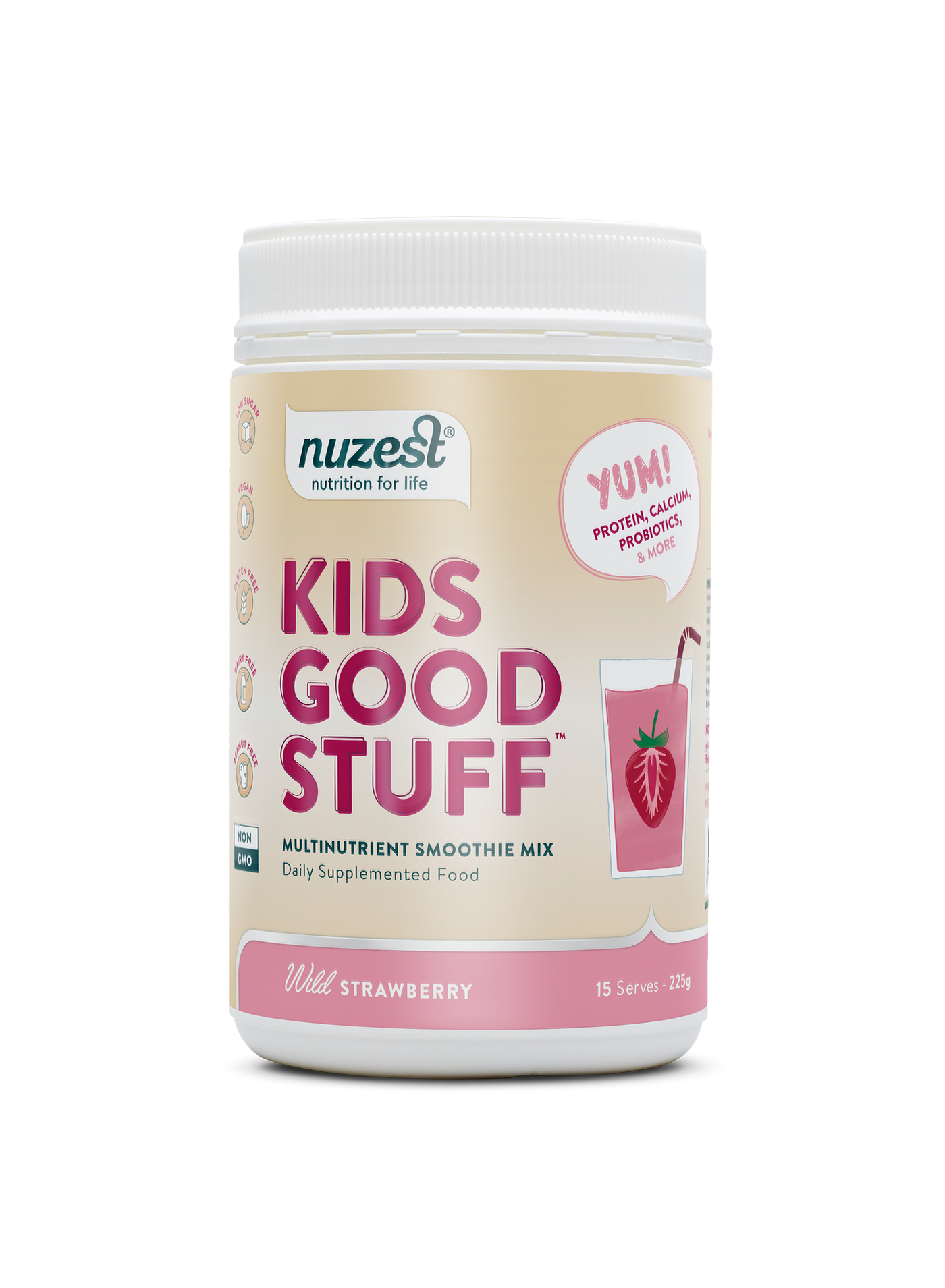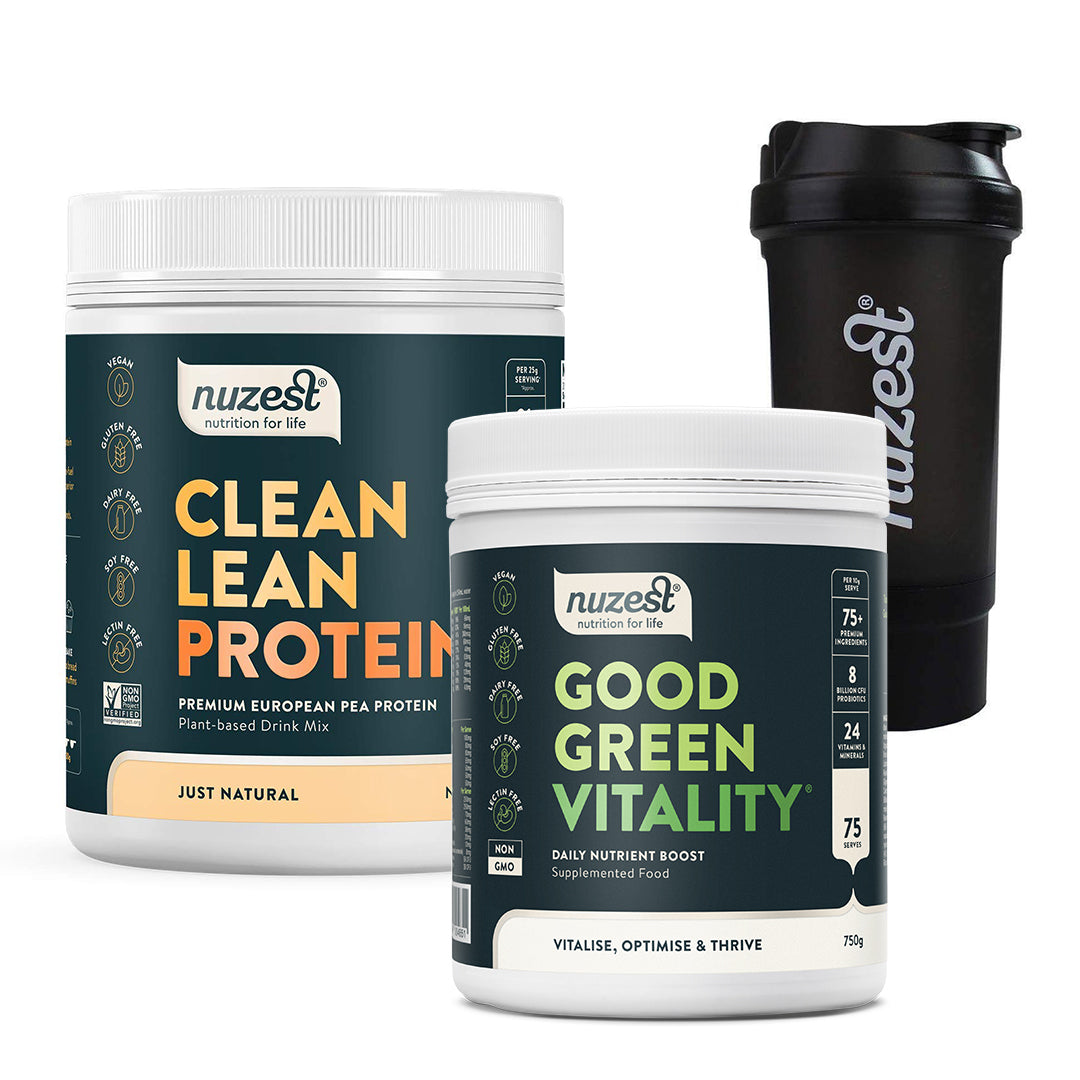By Nicola Miethke, Clinical Naturopath and Nutritionist
Despite our best efforts as parents to give our children a wholesome, balanced diet filled with plenty of fresh fruit and vegetables, quality protein and healthy fats, it’s never quite that simple! Perhaps your child is a picky eater and you’re worried that their diet of sausages and potato every night just isn’t cutting it. Maybe their schedule is so busy or they are so active that it’s hard for them to find the time to eat enough whilst on the go. Or maybe your child has a sensory processing disorder or food allergy/intolerance which limits the variety of foods they are able or willing to eat. Whatever it is, most of children won’t eat everything we give them.
So how we can be sure that our children are getting everything they need for healthy growth and development whilst still having the energy to just be kids?
First and foremost, the priority is continuing your best efforts to help your child get the nutrients they need from a predominantly wholefood, unprocessed diet. But, with various issues affecting our children’s food intake (as mentioned above) and the following statistics to prove it, there are a lot of gaps that need to be filled:
- 95% of children eat insufficient serves of vegetables
- 40% of children eat insufficient serves of fruit
- 40% of our children’s energy intake is from discretionary foods
- On average, only boys aged 4-11 and girls aged 9-11 meet the recommended daily intake for grains
- Almost all children aged 4-18 do not meet the recommended serves of dairy products, meat and alternatives1,2,3
In short, almost all children are missing the mark in at least three of the five primary food groups (fruits, vegetables, grains, meats and alternatives, dairy and alternatives) making it very difficult for them to get all the essential vitamins and minerals they need to thrive. “Thrive” being the key word here. The recommended daily intake (RDI) of vitamins and minerals set out by government guidelines are purely a baseline for survival. They do not take into consideration individual needs, activity levels or requirements for optimal wellbeing.
It doesn’t help that we are busier and more time poor than ever, and packaged convenience foods are so readily available. Unfortunately, it’s these foods (biscuits, crackers, muffins, potato and corn chips, snack bars) that children tend to love because they are the highest in sugar, salt and saturated fats, providing them with little other than high levels of kilojoules or what we call “empty calories”. They’re great at keeping them quiet but far from nourishing.
Some of the most common nutritional deficiencies we see in children are vitamin D, vitamin B12, calcium, magnesium, iodine, iron and zinc.4 Approximately 85% of girls aged 12-18 have inadequate calcium intake, 70% have inadequate magnesium levels and 40% are low in iron.2,5 Whilst 60% of boys aged 12-18 have inadequate magnesium levels and 70% don’t get enough calcium.5 It’s also very common for children, particularly teenagers, to show signs of low levels of B group vitamins (such as fatigue, difficulty concentrating and irritability) when the pressures of school life start to create additional stress. The reason why we see these deficiencies creep up as our children get older is because the period between the age of 4 and 14 is characterised by rapid growth, and cognitive and emotional development. Therefore, giving them a strong nutritional foundation during these years is the best strategy for avoiding problems later on.

Is there is an easy solution?
Thank goodness, YES! Nuzest’s Kids Good Stuff (KGS) is the nutritional insurance for our kids that we have all been looking for to put our minds at ease. Adding it to your child’s normal daily diet it will not only fill the gaps to help them reach their RDIs, it will help to ensure they are going above and beyond these recommendations for optimal health, growth and development.
For example, every serve of KGS contains 200% of the RDI for Vitamin D for children aged 4-14, 261% of Vitamin C, 278% of Vitamin B12, 83% of zinc, 63% of iodine and 21% of calcium. Not to mention a host of other essential vitamins, minerals, fruits, vegetables, herbs, protein and probiotics to support all 11 body systems through this time of rapid growth.
Is Kids Good Stuff easy to take?
One of the things that kids love the most about Kids Good Stuff is that it tastes too good to be healthy. So good that even the fussiest of eaters will be happy to take it. With 8g of the highest quality pea protein per serve, Kids Good Stuff makes the perfect addition to breakfast or is a healthy and satisfying snack all on its own. Alternatively, it can be blended with your children’s favourite smoothie ingredients or added to raw snacks and treats for a nutrient boost.
As a parent, knowing that just one scoop a day can be the difference between your child not getting the nutrients they need to grow and develop properly and your child thriving, it’s an absolute must! It will make you feel confident that you are giving our children the best start in life.

Why is it better than a regular multivitamin?
If you ask me, Kids Good Stuff is a clear winner over any multivitamin capsule or gummy. Not only do children associate gummies with candy, deeming all varieties of chewy confectionary to be “healthy” to them, but it’s impossible to get all the nutritional support children need in just one small chew or capsule. Because Kids Good Stuff comes in a concentrated powder form with no fillers, it’s able to deliver over 50 ingredients in quantities that will actually have a beneficial effect.
Even more importantly than the quantity though is the quality of the ingredients. And Nuzest have absolutely assured this. Every vitamin, mineral, herb and probiotic in Kids Good Stuff has been selected based on maximum bioavailability, meaning that the body can recognise and absorb every ingredient and none of it goes to waste.
In summary, if you are looking for nutritional insurance to give you peace of mind that your child is getting all the nutrients they need to grow and thrive then there is nothing like Kids Good Stuff. With everything they need for healthy development, strong immunity, good digestion and gut support, healthy bones and long-lasting energy without any of the bad stuff, it’s the best way to keep them happy and healthy from the inside out.
Please note that vitamin and mineral supplements can interact with medications. If your child has been prescribed medication by a GP or specialist, it’s important to consult them before taking a nutritional supplement.
References:
AIHW (2018). Australia’s Health 2018. Retrieved 13 October 2010 from https://www.aihw.gov.au/reports/australias-health/australias-health-2018/contents/indicators-of-australias-health/fruit-and-vegetable-intake
AIHW (2018). Nutrition Across the Life Stages. Retrieved 13 October 2020 fromhttps://www.aihw.gov.au/getmedia/fc5ad42e-08f5-4f9a-9ca4-723cacaa510d/aihw-phe-227.pdf.aspx?inline=true
AIHW (2019). Poor Diet in Children. Retrieved 13 October 2020 https://www.aihw.gov.au/reports/food-nutrition/poor-diet/contents/poor-diet-in-children
Raising Children Network (2020). Vitamins and Minerals. Retrieved 12 October 2020 from https://raisingchildren.net.au/teens/healthy-lifestyle/nutrients/vitamins-minerals#vitamin-and-mineral-deficiencies-nav-title
ABS (2015). Australian Health Survey: Usual Nutrient Intakes. Retrieved 12 October 2020 from https://www.abs.gov.au/statistics/health/health-conditions-and-risks/australian-health-survey-usual-nutrient-intakes/latest-release






